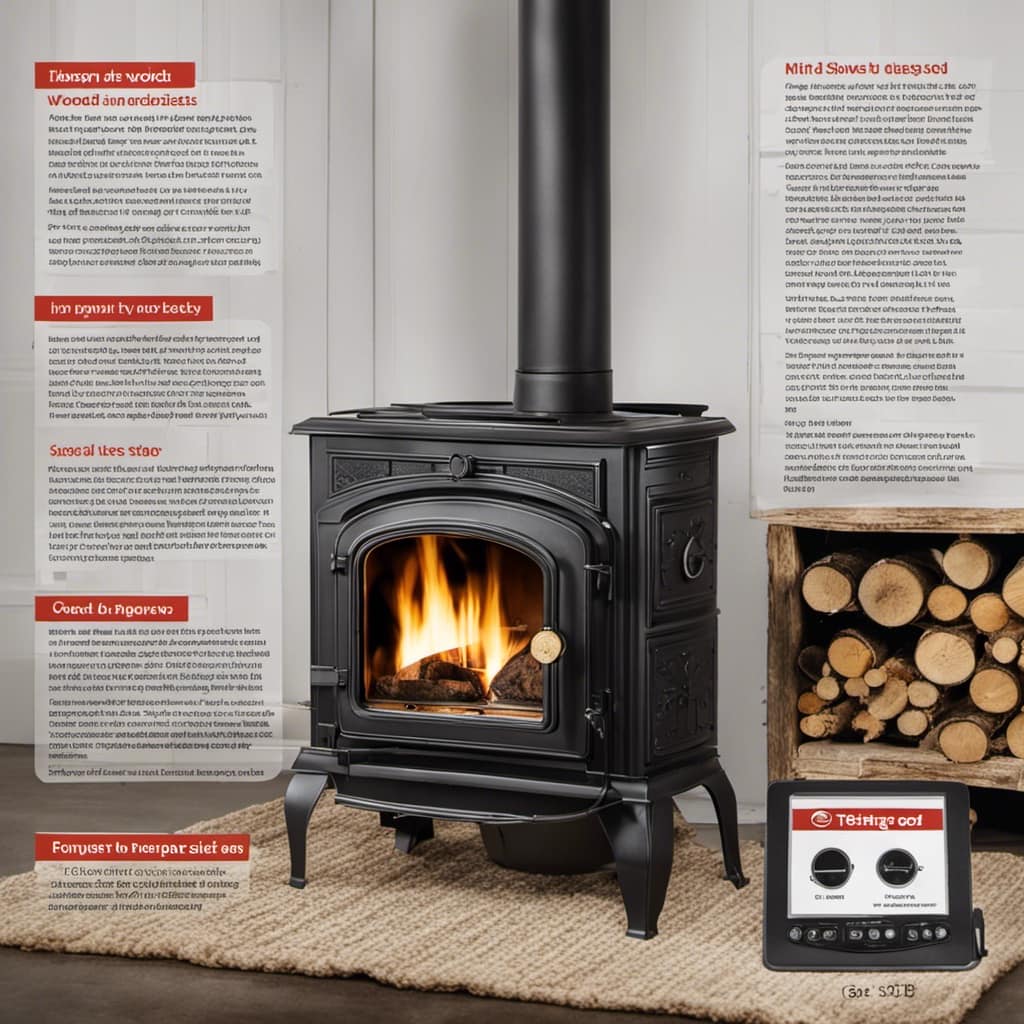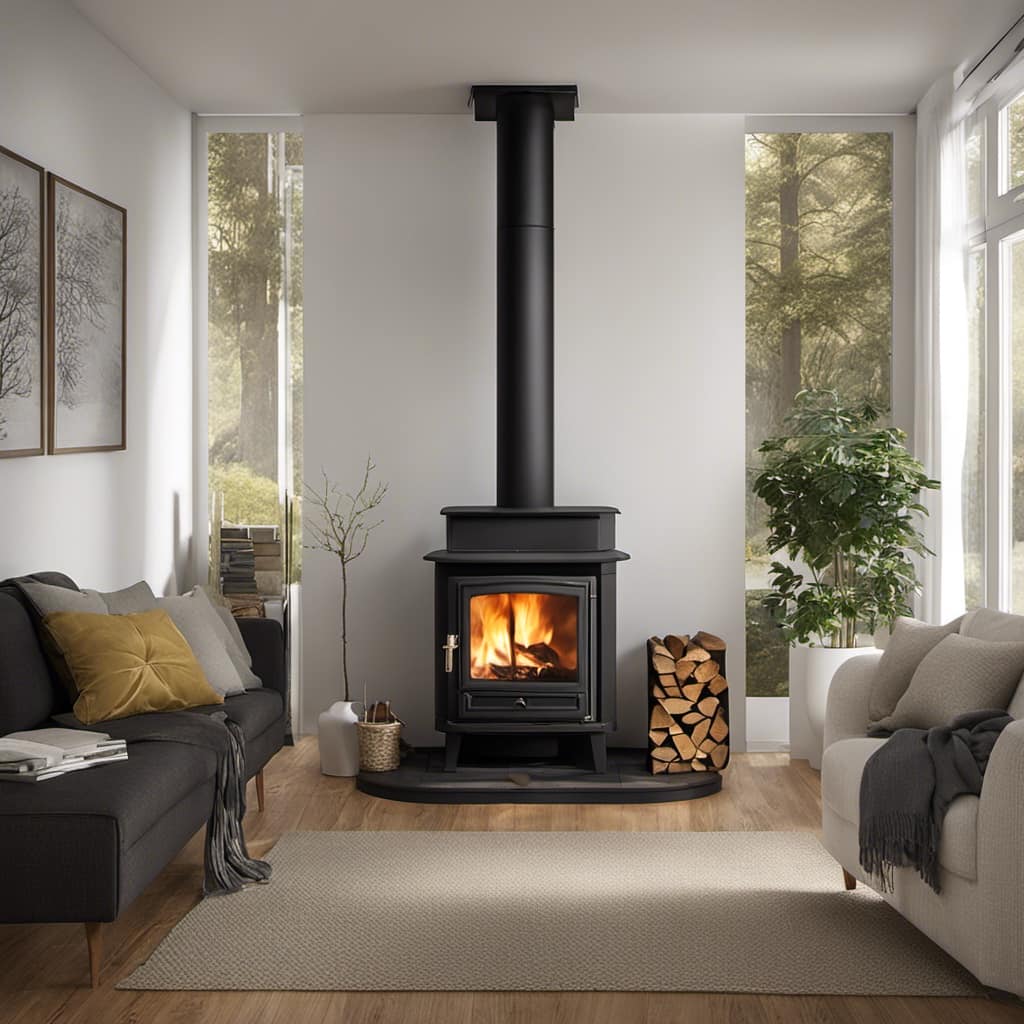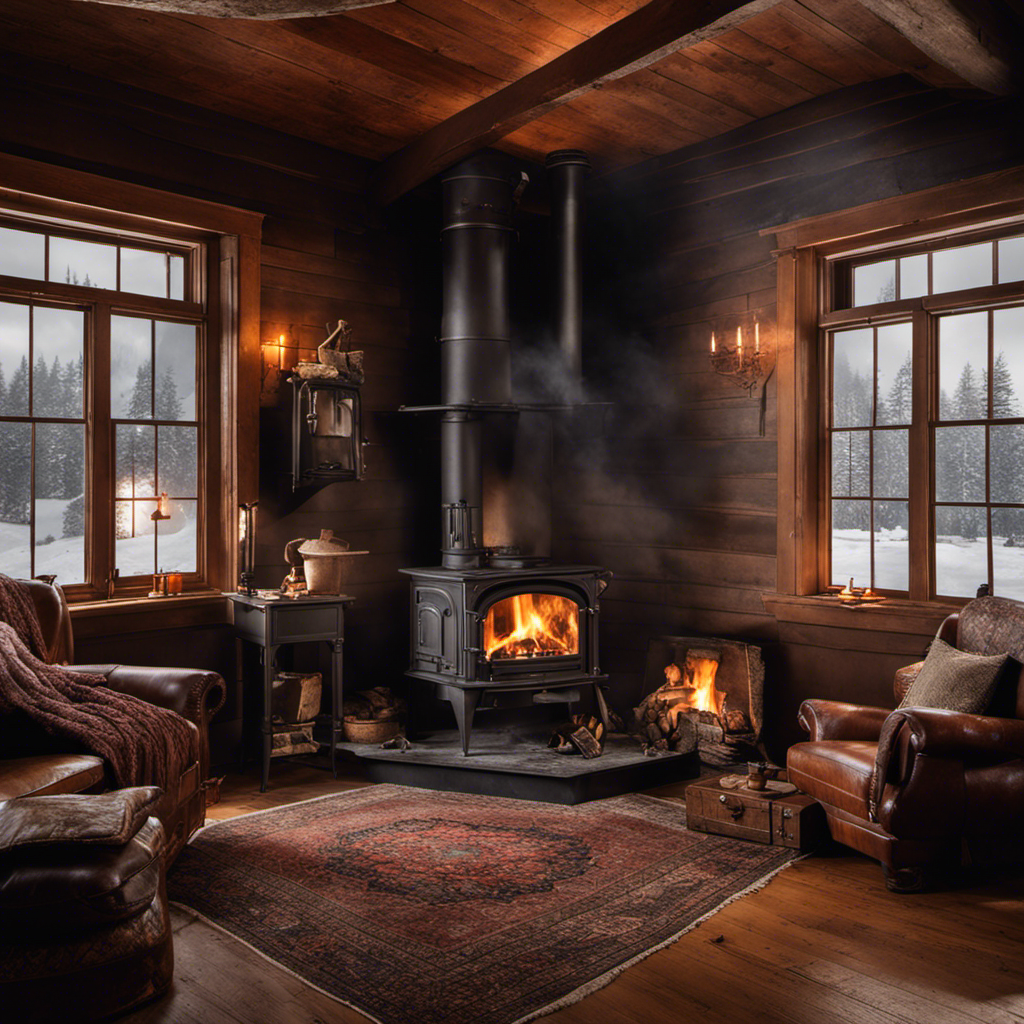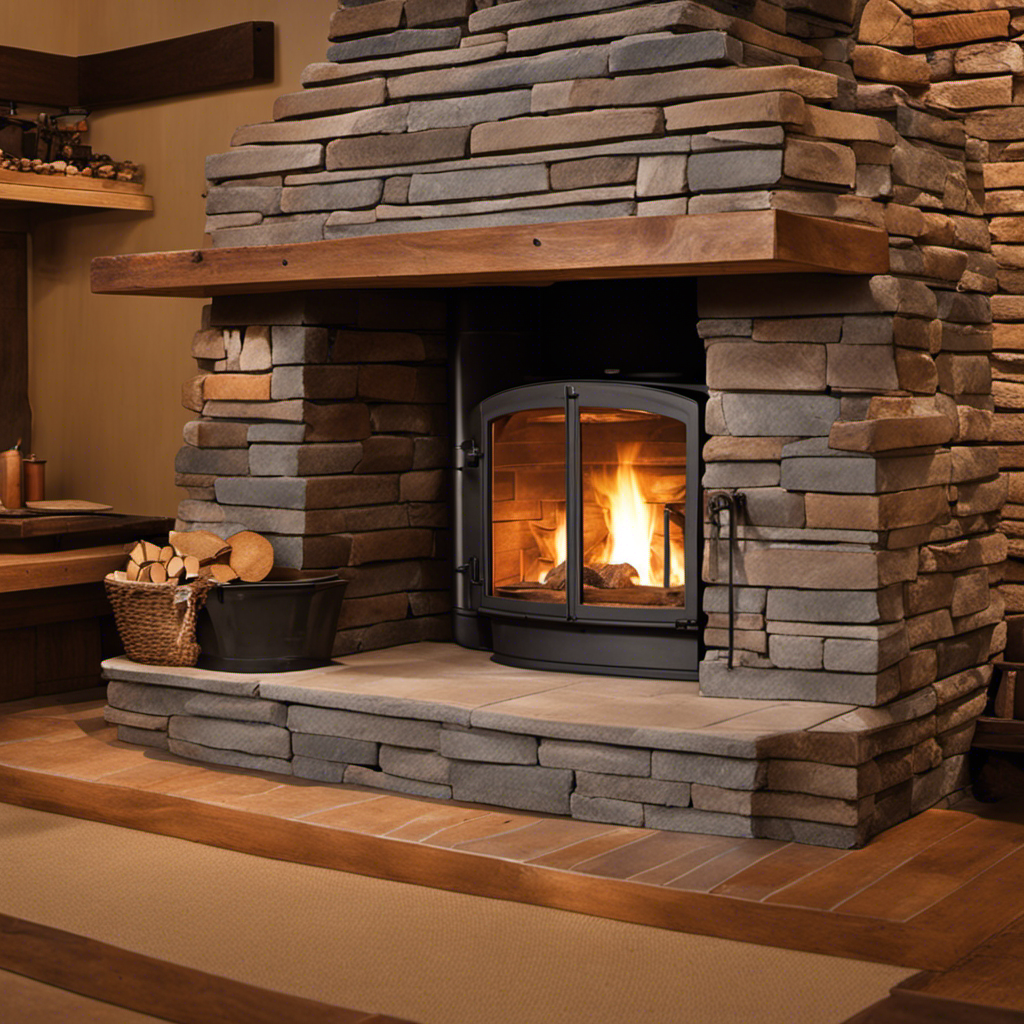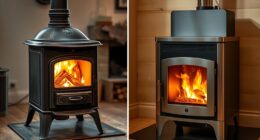Are you seeking to build a simple hot water heating system with a wood stove? You’re in the right place.
I’ll walk you through the process step by step, from gathering the necessary materials to testing and maintaining your creation.
With a little elbow grease and know-how, you’ll be enjoying hot water in no time.
So let’s get started, shall we?
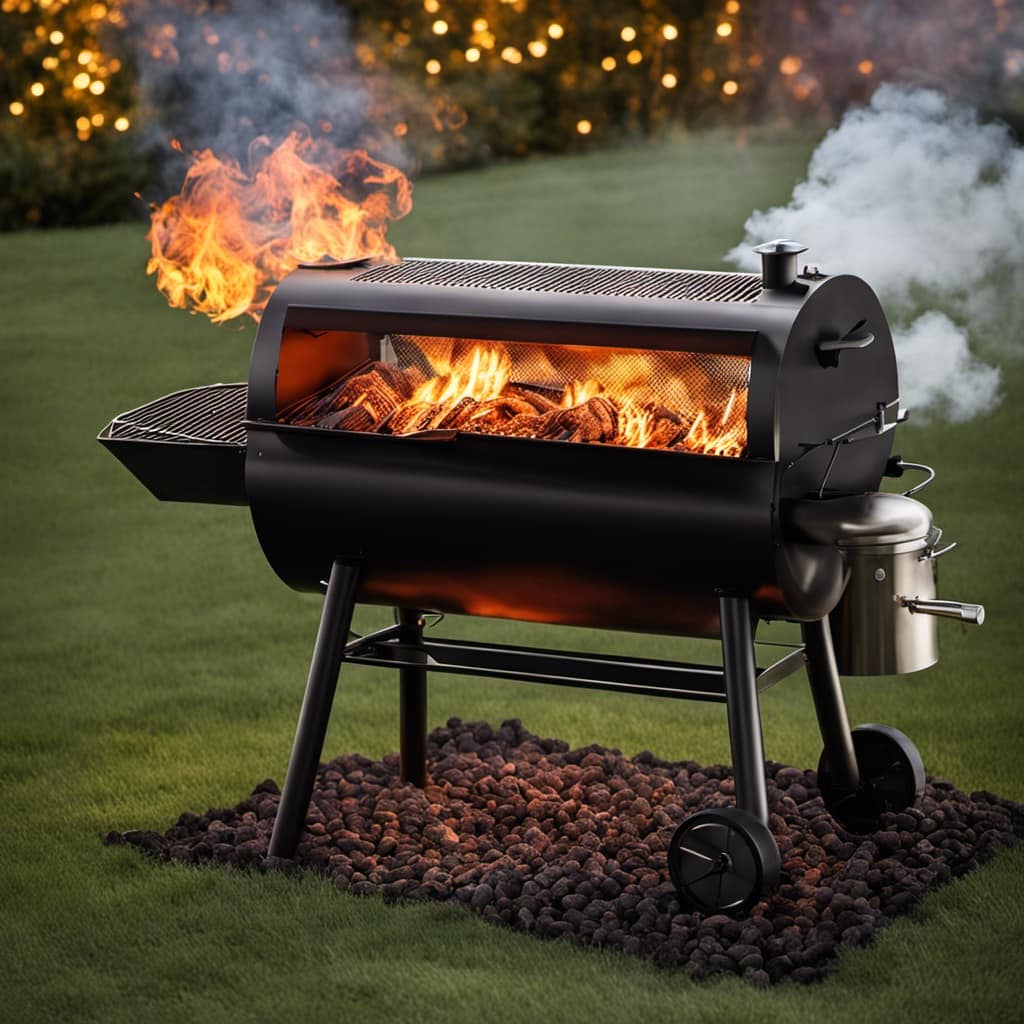
Key Takeaways
- Choose a wood stove designed for efficient water heating
- Proper insulation is crucial for retaining heat and improving efficiency
- Regular cleaning and maintenance of the wood stove is necessary for optimal performance
- Connect the hot water tank directly to the water heat exchange system and ensure proper insulation for the connection.
Gathering the Necessary Materials
I need to start gathering the necessary materials for the hot water heat project.
The first step is choosing the right wood stove. It’s essential to select a stove that’s designed to heat water efficiently. Look for models with built-in water heating capabilities or those that can be easily modified to include a water heat exchange system.
Next, I’ll need to gather materials for insulating the water heat exchange system. This includes insulation sleeves or blankets to wrap around the pipes and an insulating material, such as fiberglass or foam, to cover the water storage tank. Proper insulation helps retain heat and improves the overall efficiency of the system.
Preparing the Wood Stove for Installation
To prepare the wood stove for installation, I start by checking the chimney flue for any blockages or obstructions. It’s crucial to ensure proper ventilation before using the wood stove.

Next, I clean the stove thoroughly to improve its efficiency. This involves removing any ash or debris from the firebox and flue pipes. Regular cleaning is essential to prevent the buildup of creosote, which can reduce the stove’s performance and pose a fire hazard.
Additionally, I inspect the door gaskets and replace them if necessary to maintain a tight seal. This helps to prevent air leaks and ensures efficient combustion.
Lastly, I check the stovepipe for any signs of damage and repair or replace it as needed.
By following these tips for cleaning and maintaining a wood stove, I can improve its efficiency and ensure safe operation.
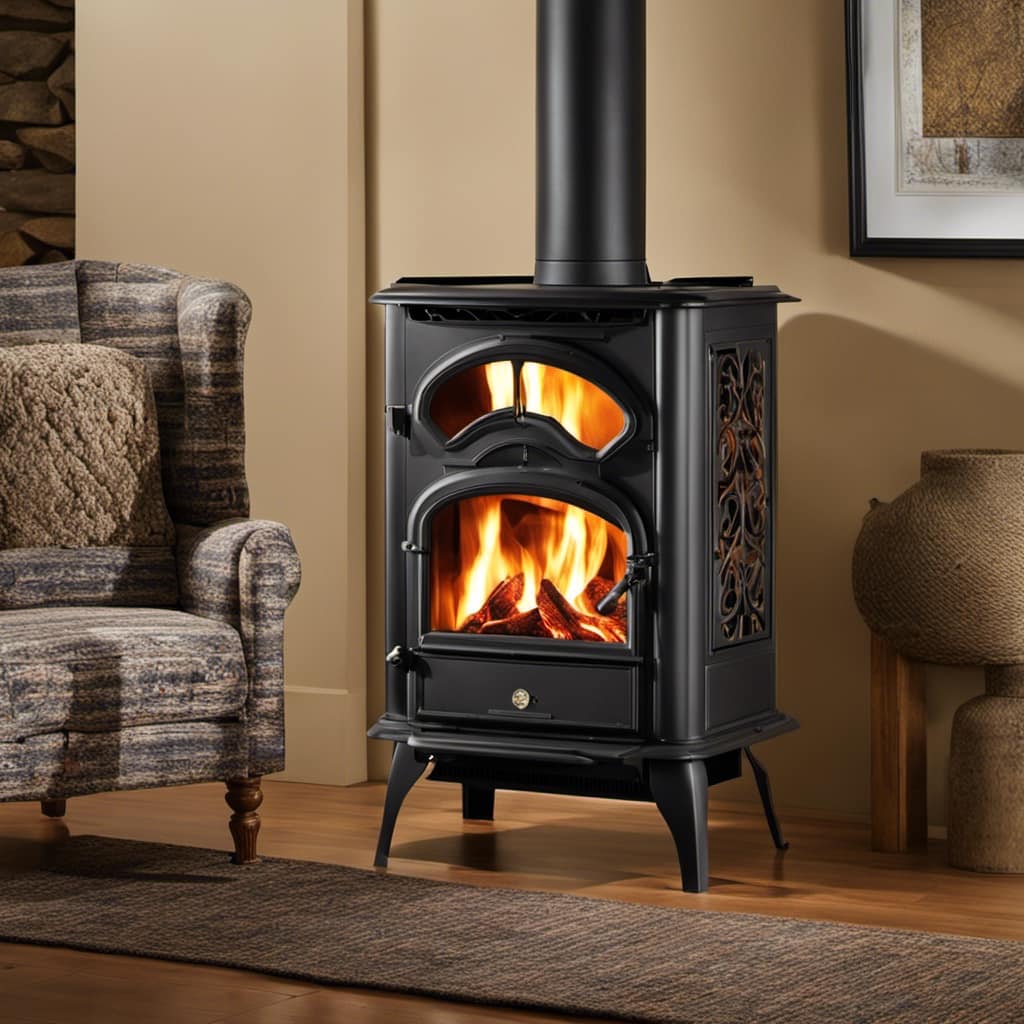
Installing the Water Heat Exchange System
The water heat exchange system is a key component that allows hot water to be produced using the wood stove, and it can greatly increase the overall efficiency of the heating system. To maximize heat efficiency and ensure a successful installation, it’s crucial to choose the right size water heat exchanger.
Here are three important considerations when selecting a water heat exchanger:
Sizing: It’s essential to choose a water heat exchanger that matches the heating requirements of your home. Consider factors such as the size of your wood stove, the amount of hot water needed, and the insulation of your space. A properly sized exchanger will optimize heat transfer and prevent energy wastage.
Material: Selecting the right material for the exchanger is vital for its durability and effectiveness. Common materials include stainless steel, copper, and titanium. Each material has its own set of advantages and disadvantages, so choose one that suits your specific needs and budget.
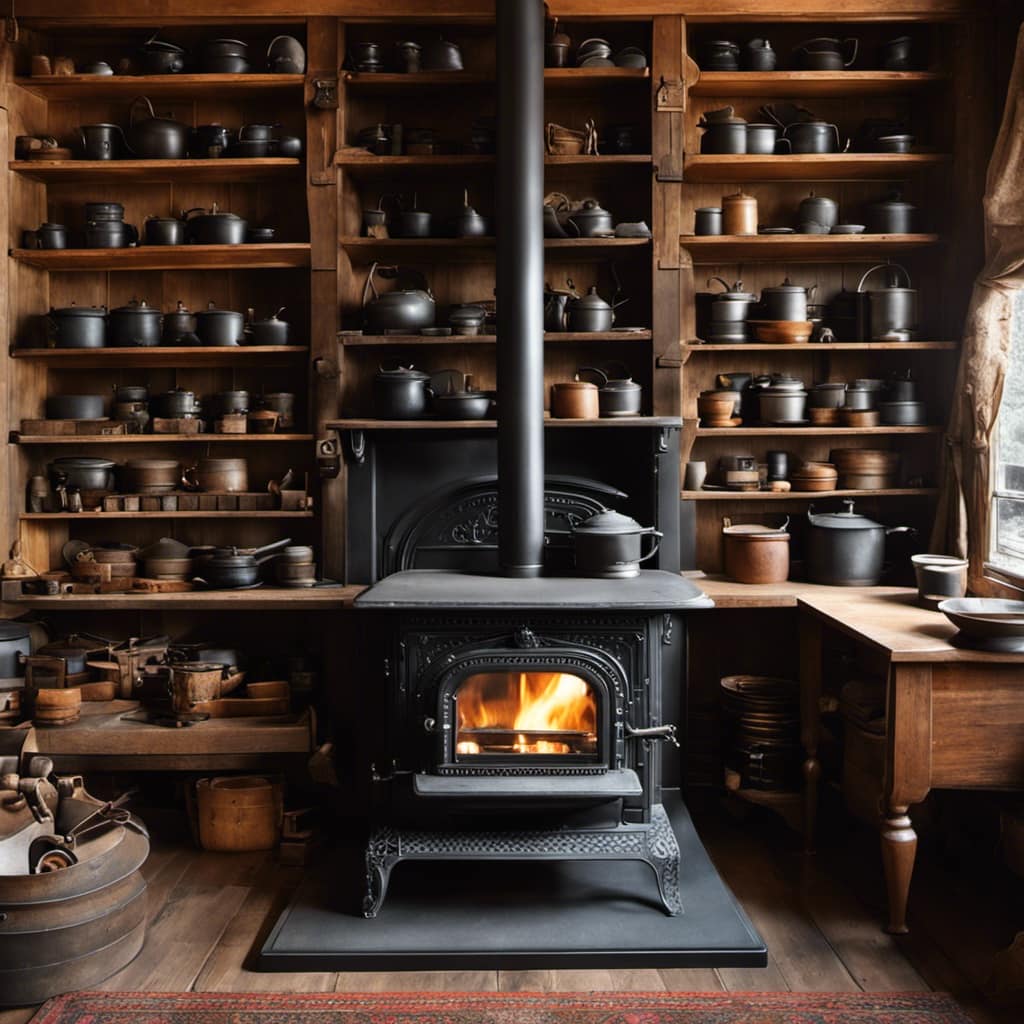
Installation: Proper installation is crucial for the efficient functioning of the water heat exchange system. Ensure that the exchanger is installed correctly, with proper insulation and connection to the water supply system. It’s advisable to consult a professional or follow manufacturer guidelines to ensure a safe and effective installation.
Connecting the Hot Water Tank
To maximize efficiency, connect the hot water tank directly to the water heat exchange system. This ensures that the heated water is efficiently transferred from the stove to the tank, providing a constant supply of hot water. When connecting the hot water tank, it is crucial to ensure proper insulation for the connection to prevent heat loss. This can be achieved by using insulation sleeves or wraps specifically designed for hot water tank connections.
Can the Hot Water Heat from a Wood Stove be Used to Heat a Sauna?
Yes, you can build your own sauna and use the hot water heat from a wood stove to heat it. By installing a heat exchanger, you can transfer the heat from the stove to the water, which can then be circulated through the sauna’s heating system.
Hot Water Tank Connection Insulation
| Column 1 | Column 2 | Column 3 |
|---|---|---|
| Insulation Type | R-Value | Material |
| Sleeve | R-6 | Foam |
| Wrap | R-8 | Fiberglass |
Troubleshooting common issues with hot water tank connections involves checking for leaks, inspecting the insulation for damage, and ensuring proper alignment and tightness of the connections. Leaks can be fixed by tightening the fittings or replacing damaged parts. Damaged insulation should be replaced to maintain efficiency.
In the next section, we will discuss testing and maintaining your hot water heat system, ensuring optimal performance and longevity.
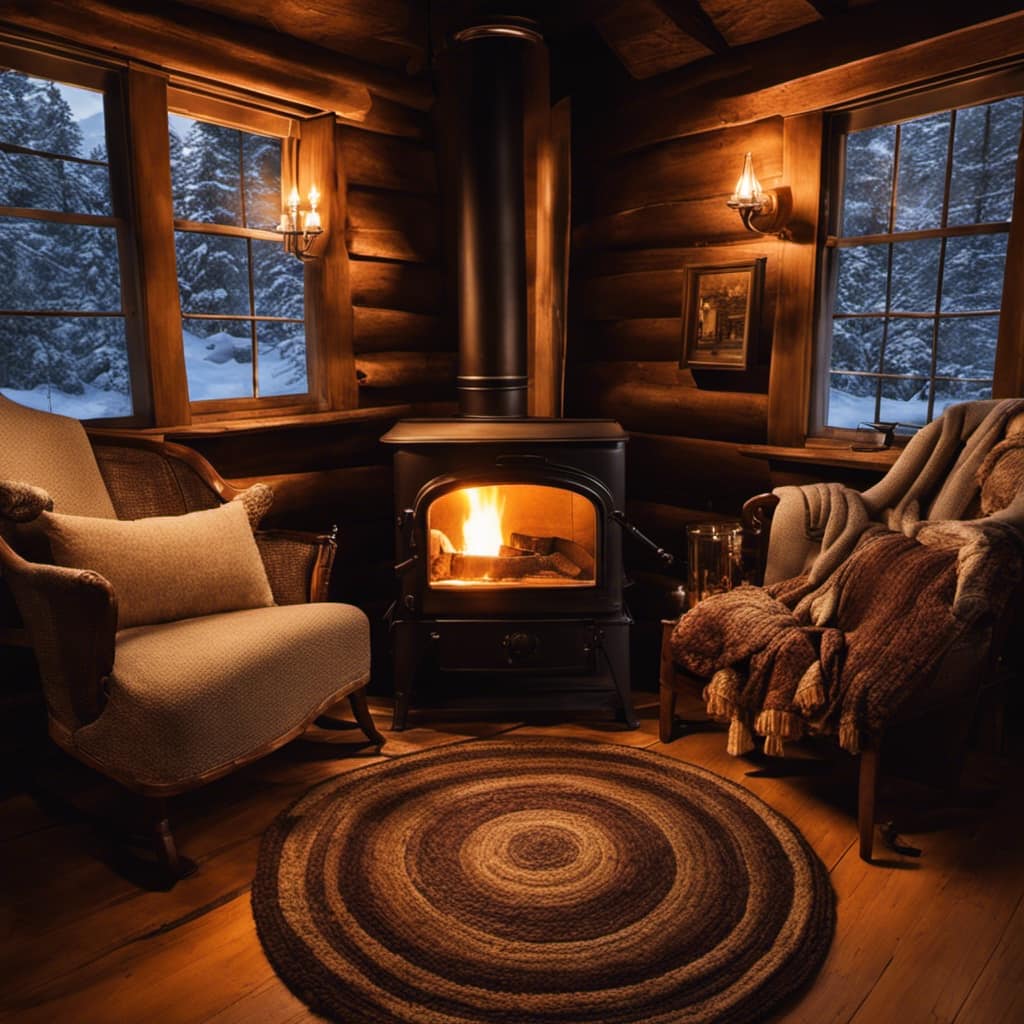
Testing and Maintaining Your Hot Water Heat System
Maintaining my hot water heat system is crucially important to ensure its optimal performance and longevity. To achieve this, I follow a systematic approach that includes troubleshooting common issues and maximizing energy efficiency. Here are three key steps:
- Troubleshooting common issues with hot water heat systems:
- Check for leaks: Inspect all connections and pipes for any signs of leakage. Repair or replace any faulty components promptly.
- Bleed air from the system: Air trapped in the pipes can reduce efficiency and cause uneven heating. Use a bleed key to release the air from the radiators.
- Monitor water pressure: Ensure that the system maintains adequate water pressure. Low pressure may indicate a problem with the expansion tank or pressure relief valve.
- Maximizing energy efficiency in your hot water heat system:
- Insulate pipes: Properly insulating the hot water pipes helps to reduce heat loss and increases energy efficiency.
- Set optimal temperature: Find the right balance between comfort and energy savings by setting the temperature to the lowest point that meets your needs.
- Regular maintenance: Schedule annual maintenance checks to clean and tune your system, ensuring it operates at peak efficiency.
Conclusion
In conclusion, building a simple hot water heat system from a wood stove can be a rewarding and efficient solution for heating your home. By gathering the necessary materials, preparing the wood stove for installation, and connecting the water heat exchange system, you can enjoy a constant supply of hot water.
Regular testing and maintenance will ensure the system operates at its best. So sit back, relax, and let the cozy warmth of your wood stove provide you with hot water for all your needs.
Growing up surrounded by the vast beauty of nature, Sierra was always drawn to the call of the wild. While others sought the comfort of the familiar, she ventured out, embracing the unpredictable and finding stories in the heartbeat of nature.
At the epicenter of every remarkable venture lies a dynamic team—a fusion of diverse talents, visions, and passions. The essence of Best Small Wood Stoves is crafted and refined by such a trio: Sierra, Logan, and Terra. Their collective expertise has transformed the platform into a leading authority on small wood stoves, radiating warmth and knowledge in equal measure.

